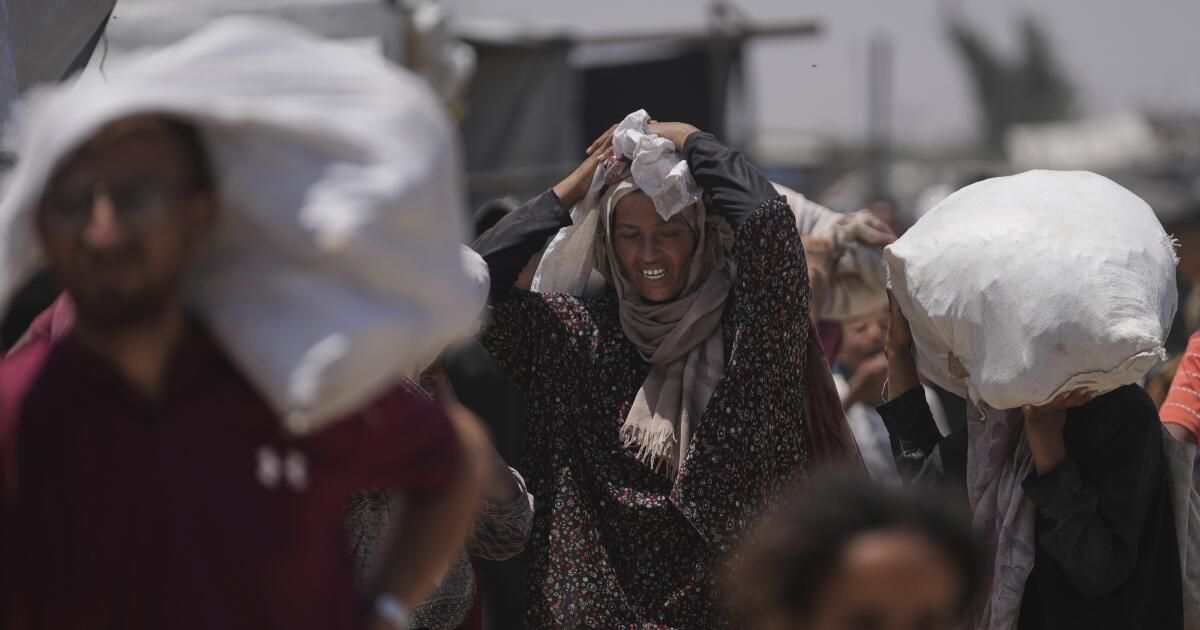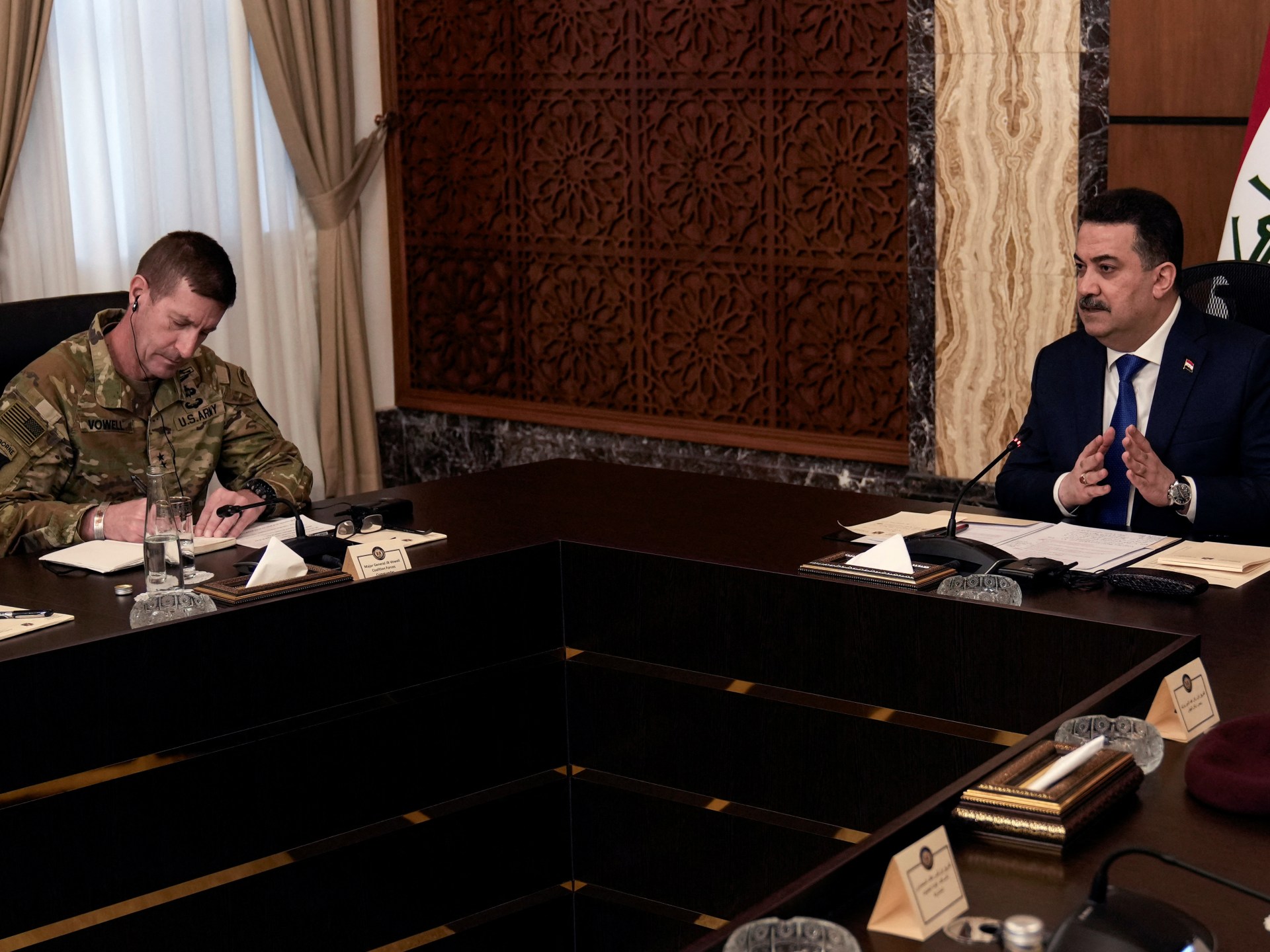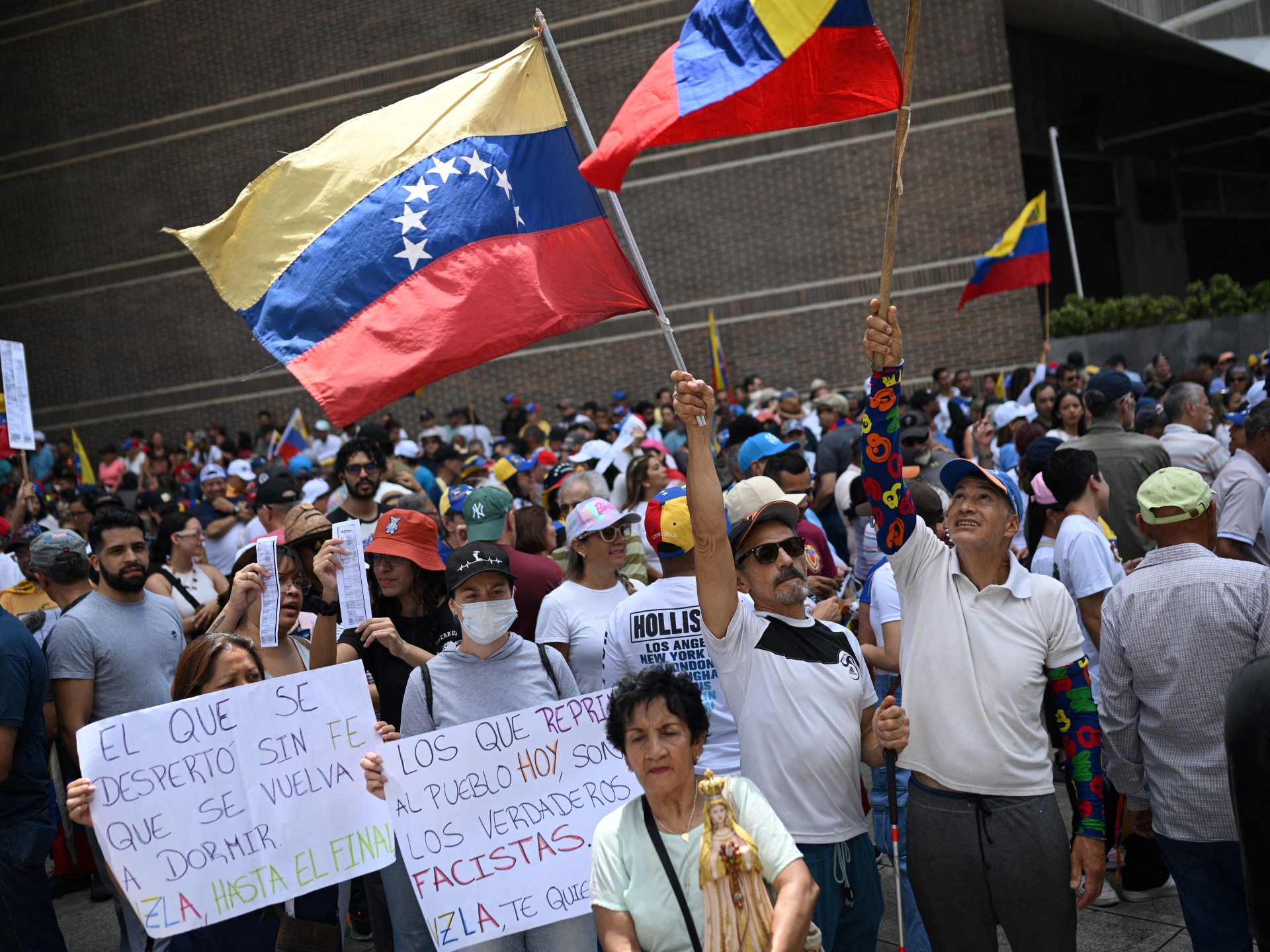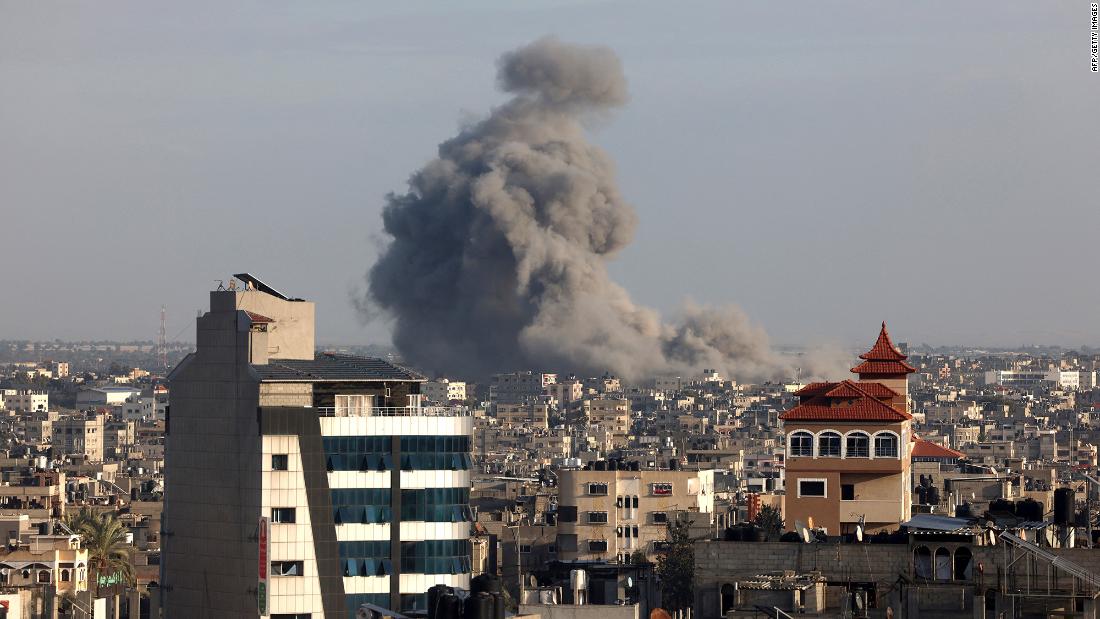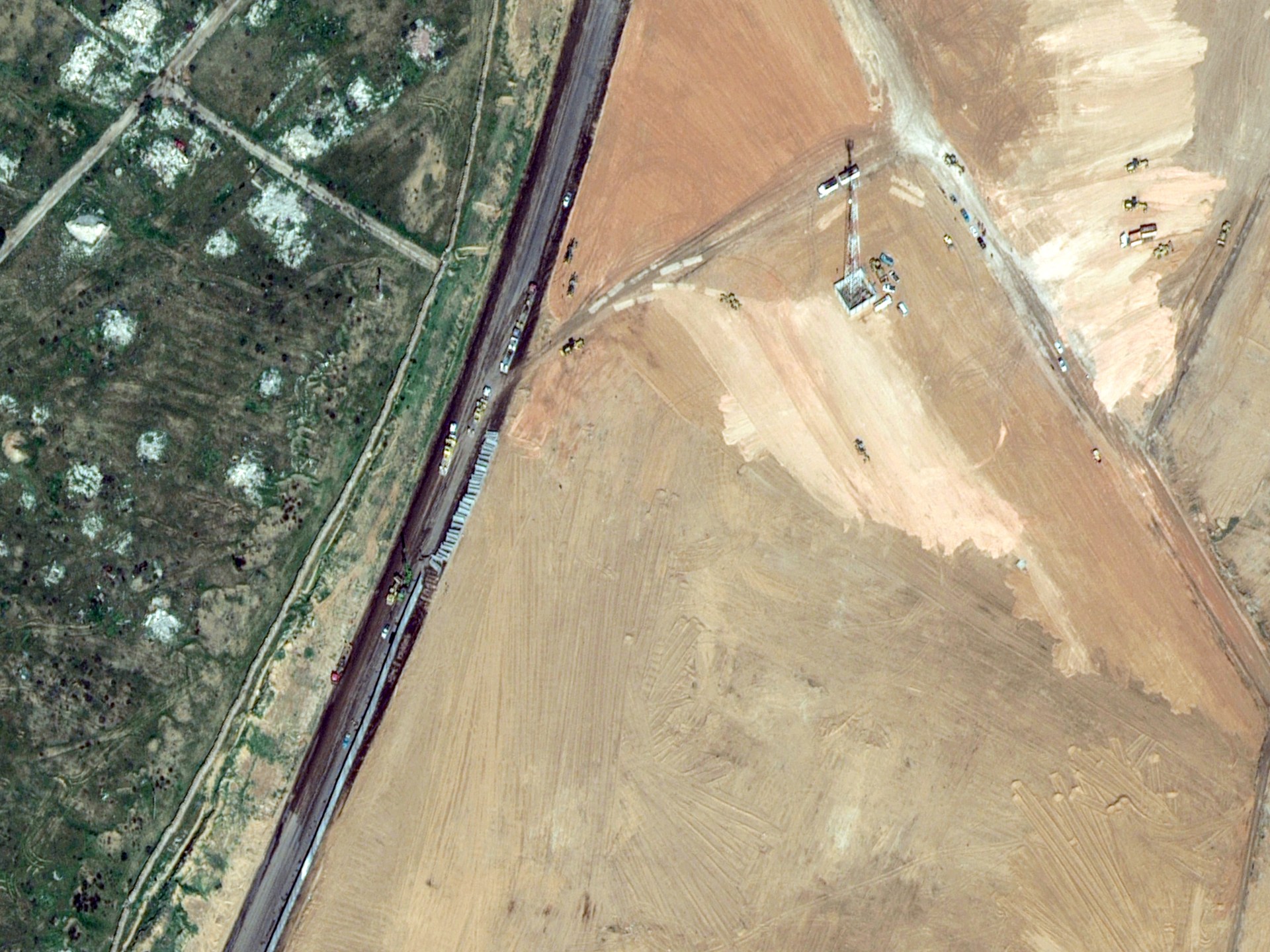Deir al Balah, Gaza – As “squid game”. This is how residents describe it, invoking the dystopian television program by counting the lethal glove in which the help in Hambriente Gaza has become in Gaza.
“It is a death race. The faster, stronger, more fortunate, they are the ones that could survive, they could reach food,” said Mohammed al-Shaqra, 30.
“It seems that we are animals, running through a supply box as if our lives depended on it. And they do it.”
Since Israel set aside the United Nations and other humanitarian organizations at the end of last month and the assistance operations commissioned to the Gaza Humanitarian Foundation, an opaque private contractor and backed by Israeli registered in Delaware, the murder has been the almost daily partner of help deliveries.
On Thursday, Gaza health authorities said 12 people were killed near a GHF distribution center, a relatively low toll in a week that saw 59 dead in similar circumstances on Tuesday. Since the Foundation began its work on May 26, more than 400 people have been killed and more than 3,000 injured.
Al-Shaqra became one of the victims this month.
On June 8, he met with thousands of early people in the morning near the GHF center in the city of Rafa in southern Gaza. It was his third attempt to obtain food.
“I was desperate to bring something: flour, rice, pasta, anything, for my parents, my brothers and their children,” he said.
When the hall opened to the distribution center, Al-Shaqra ran as fast as he could, hoping to overcome others in the crowd and take a box. But then an Israeli Quadcopter drone had been buzzing in advance, began to leave explosives; The third bomb landed near him, he said.
Mohammed al-Shaqra receives medical treatment within a tents clinic at Nasser Hospital in Rafah, Gaza, on June 12. He says he had gathered food plots from a distribution center of the Gaza Humanitarian Foundation when an Israeli Quadcopter eliminated explosives.
(Shbeir Bilal / For the Times)
“My left arm was shattered. I looked down and saw the bone hung, and there was acute pain in my guts,” he said. Cradling his arm and trying to stop bleeding from his stomach, stumbled for almost half a mile before collapsing a donkey. A kind driver took him to a field hospital for the International Community of the Red Cross. The doctors saved his arm.
The GHF entered online two months after Israel cut all the help in Gaza in March, justifying the blockade, despite the generalized opprobrium, as a way of pressing Hamas to free the hostages even when the Palestinian authorities and help groups reported a star crisis.
Although the UN and humanitarian organizations requested access to feed the approximately 2 million people in the Gaza Strip, Israel insisted that Hamas was stealing help, a claim that the UN and other groups deny and that Israel has never provided evidence. The alternative, said the Israeli government, would be the GHF.

The Palestinians go to the aid center established by the Gaza Humanitarian Foundation led by the United States and Israeli in Sudaniya, an area north of the city of Gaza, Gaza, on Tuesday.
(SAEED MMT JARAS / ANADOLU / GETTY IMAGES)
But the GHF was controversial from the beginning, so much that he first chose when the executive director resigned before the aid deliveries began, saying that the foundation's plan could not be implemented without “violating the humanitarian principles.” Boston Consulting Group, who helped design the distribution system, ended his contract with the GHF earlier this month and fired two partners involved with the project.
Instead of using humanitarian workers, the GHF has deployed private contractors armed with the Israeli army parked just one hundred yards more or less. He also concentrated the aid deliveries to what the GHF calls four “fortified” centers in southern Gaza instead of the approximately 400 smaller centers used by the UN and other help groups throughout the enclave, which forces people already hungry to walk through miles through active combat areas to access deliveries.

The Palestinians carry food and another aid of the Gaza Humanitarian Foundation in Rafah, Gaza. Hungry people have had to walk through miles through active combat areas to access deliveries.
(Abdel Kareem Hana / Associated Press)
Gaza residents also complain that only one or two centers generally operate on a certain day, and rarely opens at the announced time. Nor has it been said what is in food boxes. And instead of directly delivering the boxes to the people, GHF workers in their place are thrown into pallets and observe the crowds swarms on them. People gather hours in advance on safe routes designated by the Israeli army, but are often under the Israeli fire when it is allowed to approach the centers.
“It is a real -life version of the 'squid game'. We run, then the shooting begins, we hit the floor and we are still, so we did not kill each other, then we run again,” said Hussein Nizar, a resident who repeatedly tried to get help, even after his neighbor Ameen Sameer was shot in the head.
“I saw him die by my side,” he said. “I couldn't do anything to help for all the shooting.”

Ahmed Abu Daqqa, a former barber, receives treatment at a campaign clinic at Nasser hospital in Rafah, Gaza, on June 12. They shot him next to his right eye near a distribution point of the Gaza Humanitarian Foundation. The bullet fractured her skull and broke her nose.
(Shbeir Bilal / For the Times)
The Israeli army has replied repeatedly to questions about murders near GHF sites saying that it would analyze civilian casualties. In an previous incident, he said that the troops fired people who approached them in a threatening way.
Several Palestinians and a GHF spokesman, who gave his name as Maged, said many of the shootings occur when people run beyond the boundaries of the safe route in an attempt to reach the faster distribution site.
Even if they are not injured or killed, many go home empty -handed, said Jassim, a 28 -year -old logistics worker hired by a local contractor who works with the GHF.
“Decent people, especially the elderly and women with children, cannot fight among the crowds,” he said. He added that gangs also lurk people who leave the delivery area to steal them and sell the beautiful supplies in the black market.
“Many of them wear knives. It's like a trap and I see many people killed.”
When Al-Shaqra regained consciousness, he found himself at the Nasser hospital, waiting for surgery in rooms that are already full of other victims of the attacks of that day at the GHF center. Among them was his father, Wadee Al-Shaqra, who was injured by a bullet that crossed the side of his abdomen.

The Palestinians who were injured by the Israeli fire when they gathered near a food help center await care in a bloody floor at Nasser hospital in the Strip in Gaza del Sur on Tuesday.
(AFP / Getty Images)
Wadee lost his son's notion after he was shot, but found him hours later, by coincidence, in one of the few tents established near the Nasser hospital for convalescent patients.
“I thought he was killed. I was so happy to see him that I didn't ask him if he had food. I didn't care,” Wadee said. He added that he and Al-Shaqra went to the centers despite the danger because they did not have enough bread to share among their grandchildren.
“We are supposed to protect them,” he said. “We are risking our lives just to prevent them from starving.”
The GHF says that its efforts have been a success, promoting its delivery of almost 26 million “foods” in the 22 days since the operations began. But with almost half a million people who face catastrophic levels of hunger and the entire population that contains acute food safety, according to the integrated food security phase classification, deliveries amount to approximately 0.6 meals per person.
The GHF does not explain how it defines a meal, but has previously declared that it calculated the daily rations to 1,750 calories, well below the objective of 2,200 calories used by humanitarian organizations. (MAJED said recent aid deliveries provide 2,500 calorie provisions).
The Bedlam that accompanies GHF's distribution practices, say humanitarian workers, was completely predictable.

The Palestinians take an injured man after he and others went to a help site of the Gaza Humanitarian Foundation were attacked by the Israeli forces near the Sudaniya area in Gaza on Tuesday.
(SAEED MMT JARAS / ANADOLU / GETTY IMAGES)
“The delivery of humanitarian aid can be a very direct operation, but it is complex,” said Juliette Touma, communications director of the UN Agency for Palestinians, UNRWA.
He added that UNRWA and other groups have decades of experience in serving the Palestinians, with comprehensive registration lists and an orderly distribution system that assigns appointments in conveniently located centers. GHF help, which mainly comprises dry products, such as pasta or lentils, requires gas and cooking water, which are difficult to obtain in Gaza. GHF AID also does not include hygiene and cleaning supplies, he said, an essential requirement.
“There is this arrogance that the UN and humanitarians can be replaced, thus by a third party, a private security company. It's nothing like that,” he said. “Let's do our work.”
Salem al-Najili, a 33-year-old nurse at the United Kingdom Campo Hospital in Deir Al Balah, now fears the GHF delivery times.
“Every time the GHF center opens its doors, I know what is coming,” he said.
“It means more blood and screaming, more impossible decisions of whom we can treat. And less people that we can really save.”
Shbeir, a Times Special correspondent, informed of Deir tol Balah Times sTaff Bulos writer reported Beirut.

